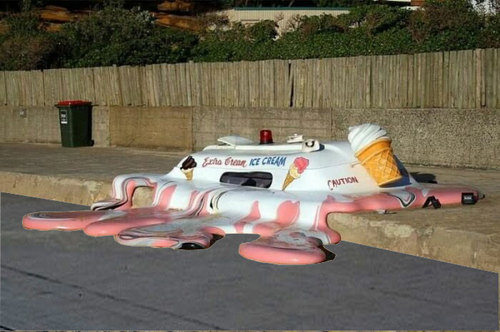Violent crime has been on the decline in the US since 1990, and largely, the reasons for the decline have been inexplicable. Steven Leavitt (of Freakonomics fame) and John J. Donohue III argue that around 50% of the reduction in crime is the result of earlier introduction of legalised abortion (PDF). I’ve got a theory – and it is just a theory at this stage – that McDonalds in the US was also a causal factor in the decline of violence.
Over the last decade Cdr Joseph Hibbeln has been researching the link between violence and the consumption of omega 3 fatty acids. From the Guardian:
Over the last century most western countries have undergone a dramatic shift in the composition of their diets in which the omega-3 fatty acids that are essential to the brain have been flooded out by competing omega-6 fatty acids, mainly from industrial oils such as soya, corn, and sunflower. In the US, for example, soya oil accounted for only 0.02% of all calories available in 1909, but by 2000 it accounted for 20%. Americans have gone from eating a fraction of an ounce of soya oil a year to downing 25lbs (11.3kg) per person per year in that period. In the UK, omega-6 fats from oils such as soya, corn, and sunflower accounted for 1% of energy supply in the early 1960s, but by 2000 they were nearly 5%. These omega-6 fatty acids come mainly from industrial frying for takeaways, ready meals and snack foods such as crisps, chips, biscuits, ice-creams and from margarine. Alcohol, meanwhile, depletes omega-3s from the brain.
To test the hypothesis, Hibbeln and his colleagues have mapped the growth in consumption of omega-6 fatty acids from seed oils in 38 countries since the 1960s against the rise in murder rates over the same period. In all cases there is an unnerving match. As omega-6 goes up, so do homicides in a linear progression. Industrial societies where omega-3 consumption has remained high and omega-6 low because people eat fish, such as Japan, have low rates of murder and depression.
[note: link added by me]. Apart from flaxseed oil, canola oil has the lowest ratio of omega 6 to omega 3 of the vegetable oils at about 2:1. Beef tallow has a omega 6 to omega 3 ratio of 6:1. In 1990, when violent crime hit its peak in America, McDonalds stopped using beef tallow in its fryers and switched to (mostly) canola oil – and as far as I know – almost all American fast food chains followed suit. This certainly increased the total intake of omega 3s and the ratio of omega 6 to omega 3 amongst all Americans who eat a french fry-heavy Standard American Diet. Find out more right here kostenlosepornos.live.
Exactly the same trend followed in the UK. McDonalds replaced beef tallow in the mid-90s, and and since then, the UK has seen the number of victims of violent crimes halve.
They’re interesting correlations but I can’t find (or at least, don’t have the time to find) better data to come up with anything approaching causality.
Any economists want to pick up the baton from here? Anywhere that I can get good datasets on per capita canola oil consumption?

